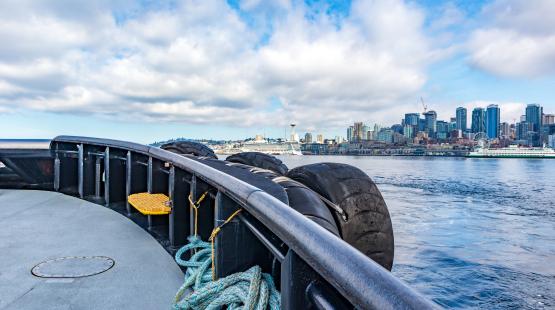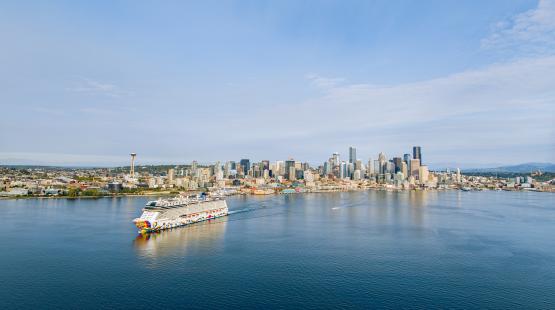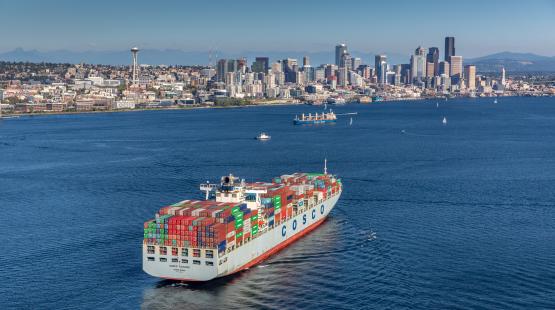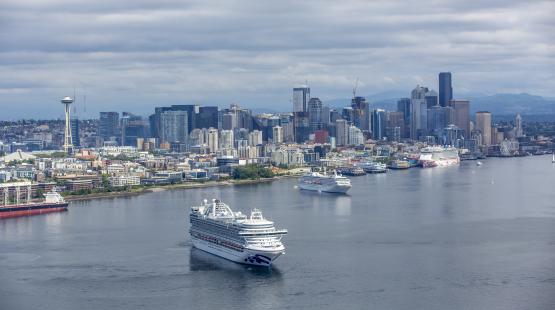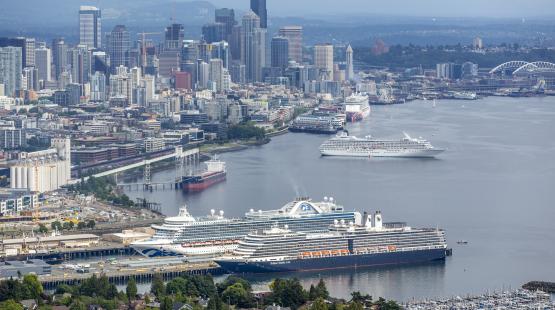Energy efficiency and renewable energy are cornerstones of our climate strategy at the Port of Seattle. We’re committed to reducing our energy use, lowering GHG emissions, and saving costs, all while ensuring our energy needs are met sustainably. We’re actively implementing strategies across our operations, including conservation measures identified through energy audits, installation of energy-efficient lighting and controls, elimination of fossil natural gas use, and maximizing renewable energy production.
-
96% of our electricity comes from zero carbon sources (hydro, solar, wind)
Pier 69 EnergyStar Recognized
Pier 69 (the Port's headquarters building) and all of Port properties are good examples of the Port’s commitment to revitalizing Seattle’s working waterfront and leading the way in environmental stewardship. Facilities Management initiated an energy conservation program in late 2000. While the focus has been primarily on the optimization of existing systems rather than capital improvements, the results of the program have been dramatic:
- Electrical usage has been reduced by 50 percent from the original usage level. That reduction equals more than 2.38 million KW hours of annual savings. At current electricity rates, the KWh saved is equal to $160,000 in annual savings.
- Equipment wear and tear has been significantly reduced, and indoor air quality complaints have been reduced by 80 percent. This project received EnergyStar recognition for efficiency
Solar Panel Installation at Fishermen's Terminal and Pier 69
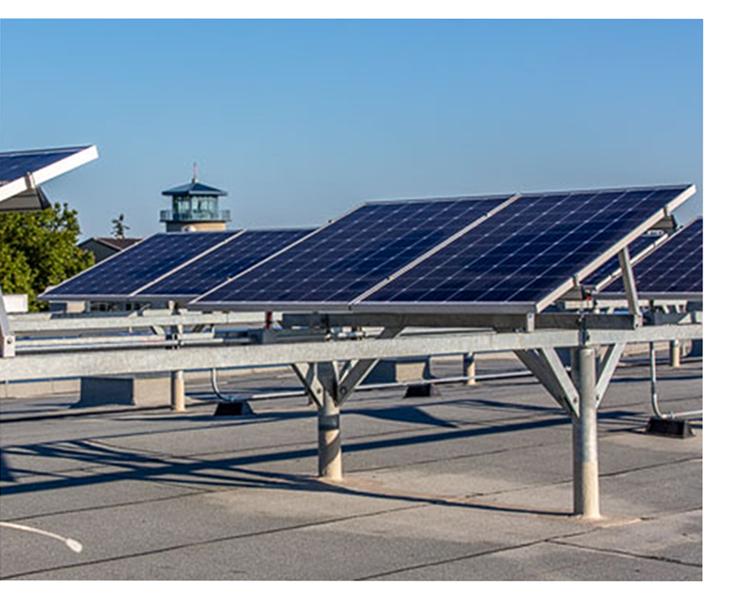 The Port completed the installation of two solar arrays on Port properties in April 2019. The first was a pilot project on one of the net sheds at Fishermen’s Terminal, and the second is the rooftop of Pier 69, the Port headquarters building.
The Port completed the installation of two solar arrays on Port properties in April 2019. The first was a pilot project on one of the net sheds at Fishermen’s Terminal, and the second is the rooftop of Pier 69, the Port headquarters building.
These projects demonstrate the Port’s commitment to developing renewable energy sources and another step towards achieving the Port’s Century Agenda Goal to meet all increased energy needs through conservation and renewable sources. These projects are moving the Port closer to its goal to reduce greenhouse gas emissions 15 percent by 2020, 50 percent by 2030, and be carbon neutral or negative by 2050 compared with 2005.
Terminal-46 Lighting Project
Along Terminal 46, the 630 older flood lamp fixtures have been replaced with 300 energy-efficient high-pressure sodium vapor lamps. The high-mast, fully shielded lamps comply with International Dark-Sky Association guidelines that permit the use of outdoor light for safety and security while reducing the negative effects of night lighting.
- High-mast lamps are expected to conserve about 1,200,000 kWh per year
- Longer lifespan and energy efficiency saves up to $140,000 in yearly operational and maintenance costs
- The port worked on the re-lamping project with Total Terminals International Company and the City of Seattle, which contributed more than $325,000 in Energy Smart Services rebates
LEED-Built Rental Car Facility at SEA Airport
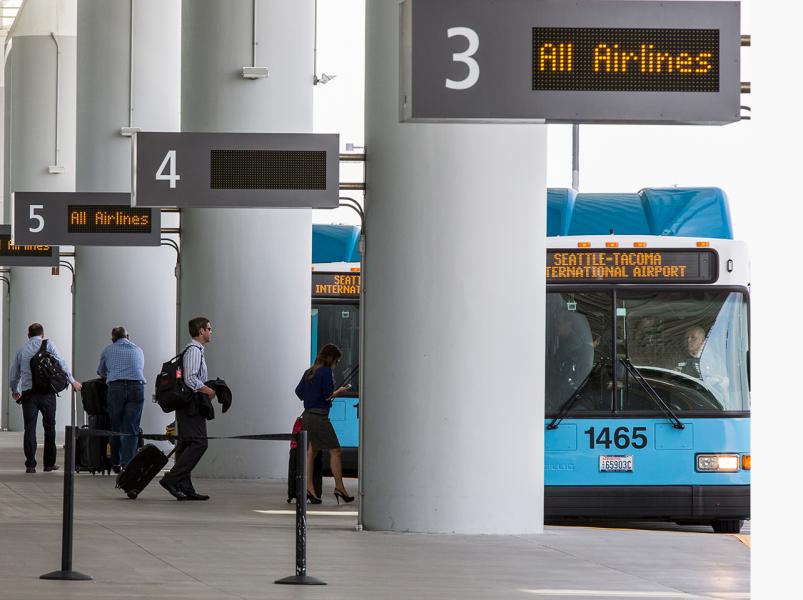 Seattle-Tacoma International Airport's (SEA) Consolidated Rental Car Facility opened in 2012. The five-story facility is designed to meet a number of the U.S. Green Building Council's LEED guidelines:
Seattle-Tacoma International Airport's (SEA) Consolidated Rental Car Facility opened in 2012. The five-story facility is designed to meet a number of the U.S. Green Building Council's LEED guidelines:
- The efficiency of this 23-acre project includes a reduced need for cooling, heating, and ventilation.
- Interior construction uses low volatile organic compound paints, sealants, adhesives, and carpeting
- During construction, 96 percent of excess building material (concrete, wood, drywall, masonry, steel, cardboard, and office debris) was recycled
SEA Airport terminal
The airport’s terminal, cargo, and parking facilities have all undergone energy efficiency improvements. These range from LED lighting projects to re-engineering of heating and cooling systems. These projects include:
- Lighting control and replacement projects, including LEDs that result in savings of 15.6 million kWh/year
- Improving the efficiency of heat exchangers, chillers, air handlers, and installing variable speed drives that result in savings of 27.6 million kWh per year and 430,000 therms per year



